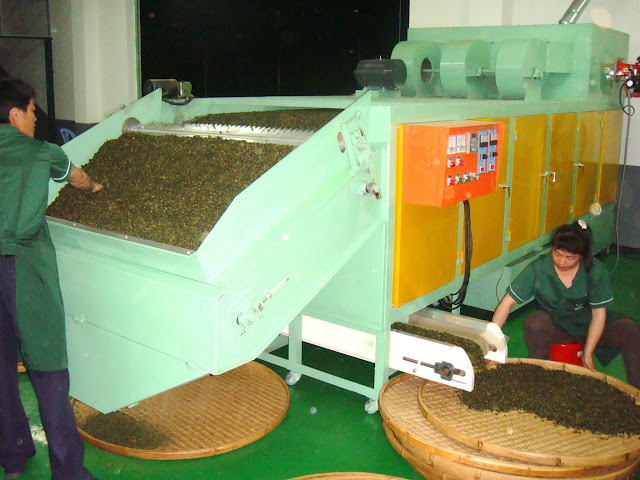Skip to main content
How oolong tea is made?
Exposing harvested tea leaves to the sunshine accelerates the evaporation of moisture, and acts as a catalyst for oxidation by naturally occurring enzymes in the tea plant.
- 2. 室内萎凋及搅拌 Indoor oxidation and shaking
The leaves are spread on automatic withering racks and shaken up intermittently for uniform exposure and to further deplete moisture during the indoor withering stage, which lasts for 6 to 12 hours. During this step, complex and subtle changes in the natural chemical composition of the leaves create the characteristic aroma and flavor of Oolong Tea.
High temperatures are used to halt enzyme activity, including oxidation and biochemical reactions. This step stabilizes the composition of the tea(in terms of aroma and taste, etc.). During tumble-heating, much of the moisture is lost from the tea leaves, and their supple nature becomes evident as they enter the next step in their processing--rolling.
During the rolling process, friction causes the breakdown of the tea leaf structure, while ensuring that the consistency of the leaf remains intact. Mass rolling may be carried out twice to reduce the volume of the finished tea, making it easier to ship, store and enter the marketplace.
The leaves become very supple when exposed to high temperature. They are then placed inside a cloth bag, forming a large ball that is rolled by a special machine or by hand. Through such controls, moisture slowly dissipates from the leaves and they gradually become more tightly curled. This step produces the characteristic appearance and enhances the characteristic aroma of Oolong Tea.
Hot air is used for drying, to halt any remaining enzyme activity after tumble-heating. This inhibits further oxidization and further stabilizes tea quality.
The tea leaves are examined and the stems are removed to reduce volume and increase its quality.
- 8.再干与烘焙 Final drying and roasting
Heat control is used during the roasting process to improve tea quality (aroma--to eliminate rogue odors and to add a roasted aroma; taste--to eliminate Maillard reaction, caramelisation, oxidative and shrinkage effects; tea color--retain clarity and prevent changes in color). Roasting stabilizes the aroma, smoothness, fragrant aftertaste and lingering aroma in the cup that is the renowned qualities of Oolong Tea.










Comments
Post a Comment